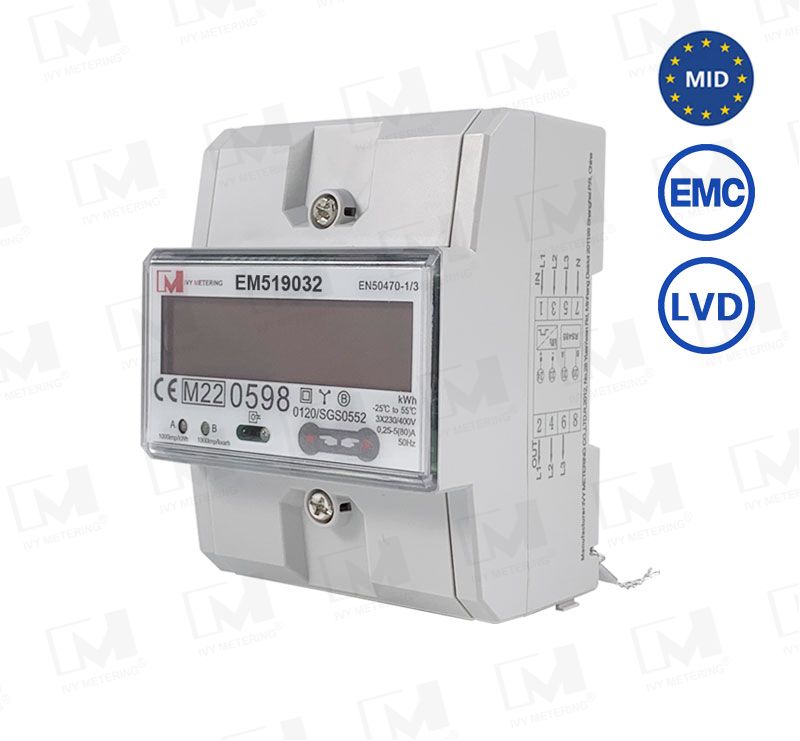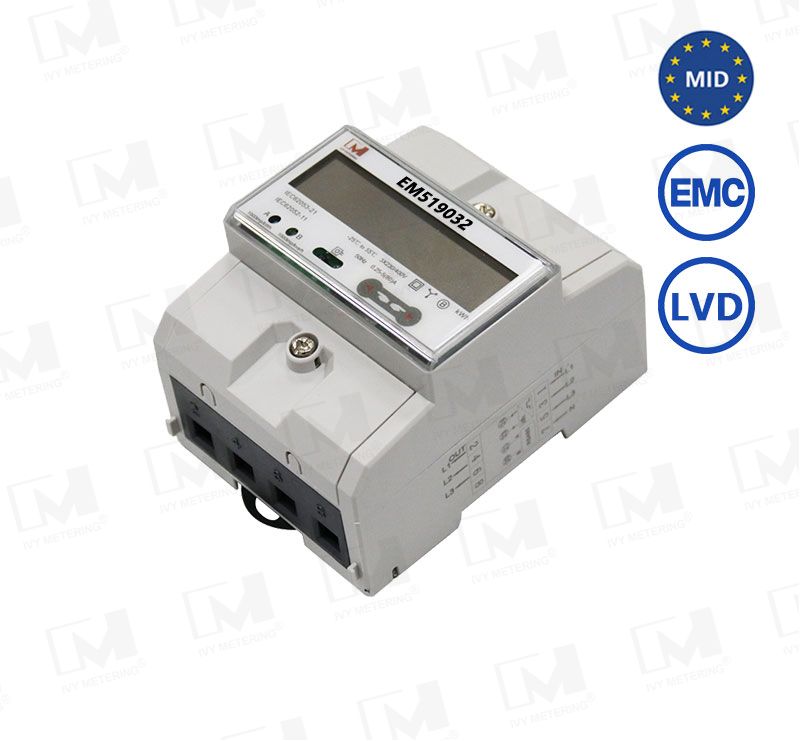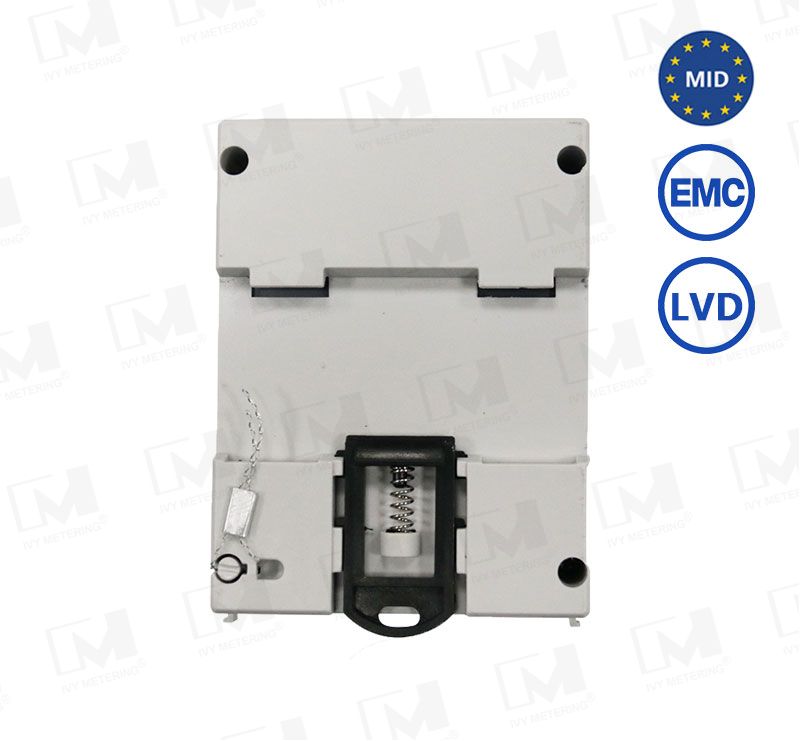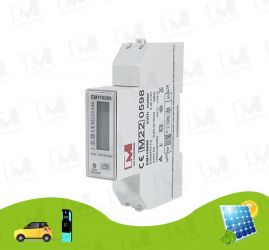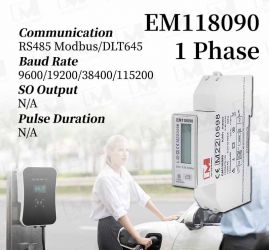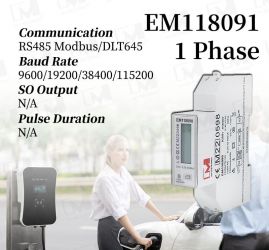EM519032 MID Approved Electric Car Charging 3 Phase Smart Bidirectional Energy Meter with RS485 Modbus
EM519032 is a 80A three-phase four-wire din rail mounted kwh meter. This EV meter adopts DIN rail installation, and has bidirectional measurement function (active forward and reserved measurement). This AC ev charging meter can also visually display the voltage, current, power, voltage, current, It is convenient to query all kinds of data and view abnormal records. With creep-proof and anti-creep logistics design, fully shielded and fully sealed structure ,advanced single-chip processing system for data collection, processing and storage, good anti-electromagnetic interference, high precision, anti-theft, low power consumption, high overload protection... It is suitable for active energy measurement with a frequency of 50Hz or 60Hz, and is installed in an indoor or outdoor meter box.
Product Features
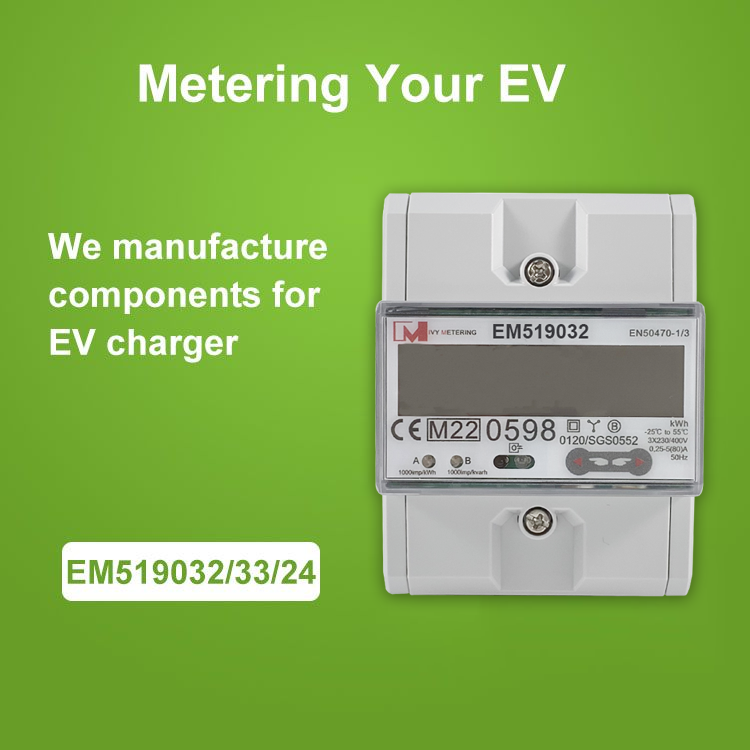
Three phase 80A 100A Direct Fed
MID B+D Certified
Forward& Reverse,Active & Reative Measurement,Class B Accuracy
Bi-Directional Measurement for Active Energy and Power
Configurable pulsed output (Import/ Export and Nett kWh)
Modbus and Mbus serial output options
Compliant with EN62056 (IEC1107) and Modbus protocol
Multi Parameter measurement,Dual Tariff,3 Module DIN rail mounted
Product Parameters
Ref. voltage | 3*230/400V |
Ref. current | 0,25- 5(80)A |
Impulse constant | 1000imp/kWh |
LCD display | LCD6+2 (smog-free) |
Operation temp. | -20~+70℃ |
Annual Average humidity | 75% |
Max humidity | 95% |
Ref. frequency | 50Hz |
Accuracy class | Class 1.0 |
Starting current | 0.004Ib |
Creeping | Anti-creep logistic design |
Power consumption | ≤1.5W,<10VA |
Standard compliant | EN50470-1/3 |
Product Dimension
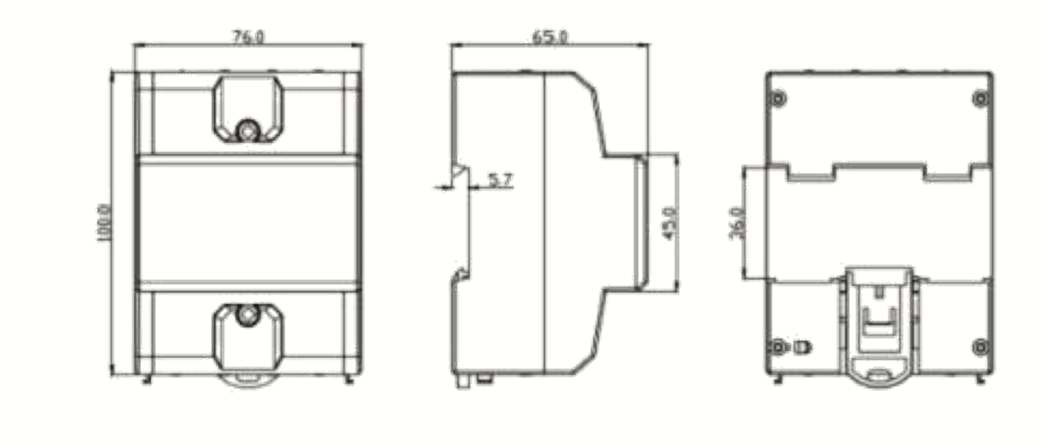
Product Application
The number of Electrical Vehicle (EV) charging stations are steadily increasing everyday as electric vehicles become more popular. More and more, EV’s are being accepted as a valuable component of the auto industry growth. As a result, EV charging stations can be found in private residences, public dedicated charging stations and even at commercial and residential buildings such as offices and condos.With residential use, these charging station’s energy cost is added to the homeowner’s utility bills. Although there are stand alone charging stations (such as Tesla’s Supercharger) that are free, many other charging stations offered by high-use commercial or residential buildings can consume significant amount of energy as EV owners “refuel” their electric cars power supply. In cases like these, energy consumption and cost by EV stations needs to be metered accurately.
EV metering can be devided into AC ev metering and DC ev metering:
DC charging piles: DC charging piles are fixedly installed in some public places outside electric vehicles, such as residential quarters, residential parking lots, commercial areas, service areas, outdoor parking lots, electric vehicle charging stations and other places. It is a charging device that provides DC power for non-vehicle electric vehicle batteries by connecting to the public grid. Because the DC charging pile can directly charge the battery of an electric vehicle, it is generally powered by a three-phase four-wire system or a three-phase three-wire system, and the output voltage and current can be adjusted in a large range, so it can realize the fast charging of electric vehicles, and the DC charging pile is also, therefore, It is called fast charge.
AC charging piles: AC charging piles are also fixedly installed in some public places outside electric vehicles, and provide controllable one-way AC power or three-phase AC power supply devices for the onboard chargers of electric vehicles. It should be noted that the AC charging pile itself does not have the charging function, it only provides power output, and can charge the battery of the electric vehicle by connecting to the onboard charger of the electric vehicle. The output power of AC charging piles will not be very large, generally 3.5kW, 7kW, 15kW, etc.
this EM519032 can be operately perfectly in DC-AC ev charging system or V2G system for charge and discharge. IVY METERING offers advanced energy monitoring solution for those who prefer to have deeper look into the energy consumption and usage patterns of EV stations. Advance AC monitoring allows remote monitoring via ethernet connection and enables historical logging of energy usage.


